
This heron carefully places a tiny piece of bread in the water, then grabs the fish that comes to eat it.
Basically, the very human activity of Fishing.
Green heron using a piece of bread as bait to catch a fish.

New research digs into how much alcohol hummingbirds consume.
Your backyard hummingbird feeder filled with sugar water is a natural experiment in fermentation—yeast settle in and turn some of the sugar into alcohol.
The same is true of nectar-filled flowers, which are an ideal gathering place for yeast—a type of fungus—and for bacteria that metabolize sugar and produce ethanol.
To biologist Robert Dudley, this raises a host of questions. How much alcohol do hummingbirds consume in their daily quest for sustenance? Are they attracted to alcohol or repelled by it? Since alcohol is a natural byproduct of the sugary fruit and floral nectar that plants produce, is ethanol an inevitable part of the diet of hummingbirds and many other animals?
“Hummingbirds are eating 80% of their body mass a day in nectar,” says Dudley, professor of integrative biology at University of California, Berkeley. “Most of it is water and the remainder sugar. But even if there are very low concentrations of ethanol, that volumetric consumption would yield a high dosage of ethanol, if it were out there. Maybe, with feeders, we’re not only [feeding] hummingbirds, we’re providing a seat at the bar every time they come in.”
During the worst of the COVID-19 pandemic, when it became difficult to test these questions in the wilds of Central America and Africa, where there are nectar-feeding sunbirds, he tasked several undergraduate students with experimenting on the hummers visiting the feeder outside his office window to find out whether alcohol in sugar water was a turn-off or a turn-on. All three of the test subjects were male Anna’s hummingbirds (Calypte anna), year-round residents of the Bay Area.
The results of that study, which appears in the journal Royal Society Open Science, demonstrate that hummingbirds happily sip from sugar water with up to 1% alcohol by volume, finding it just as attractive as plain sugar water.
They appear to be only moderate tipplers, however, because they sip only half as much as normal when the sugar water contains 2% alcohol.
“They’re consuming the same total amount of ethanol, they’re just reducing the volume of the ingested 2% solution. So that was really interesting,” Dudley says. “That was a kind of a threshold effect and suggested to us that whatever’s out there in the real world, it’s probably not exceeding 1.5%.”
When he and his colleagues tested the alcohol level in sugar water that had sat in the feeder for two weeks, they found a much lower concentration: about 0.05% by volume.
“Now, 0.05% just doesn’t sound like much, and it’s not. But again, if you’re eating 80% of your body weight a day, at .05% of ethanol you’re getting a substantial load of ethanol relative to your body mass,” he says. “So it’s all consistent with the idea that there’s a natural, chronic exposure to physiologically significant levels of ethanol derived from this nutritional source.”
“They burn the alcohol and metabolize it so quickly. Likewise with the sugars. So they’re probably not seeing any real effect. They’re not getting drunk,” he adds.
The research is part of a long-term project by Dudley and his colleagues—herpetologist Jim McGuire and bird expert Rauri Bowie, both professors of integrative biology and curators at UC Berkeley’s Museum of Vertebrate Zoology. They seek to understand the role that alcohol plays in animal diets, particularly in the tropics, where fruits and sugary nectar easily ferment, and alcohol cannot help but be consumed by fruit-eating or nectar-sipping animals.
“Does alcohol have any behavioral effect? Does it stimulate feeding at low levels? Does it motivate more frequent attendance of a flower if they get not just sugar, but also ethanol? I don’t have the answers to these questions. But that’s experimentally tractable,” he says.
Part of this project, funded by the National Science Foundation, involves testing the alcohol content of fruits in Africa and nectar in flowers in the UC Botanical Garden. No systematic studies of the alcohol content of fruits and nectars, or of alcohol consumption by nectar-sipping birds, insects, or mammals, or by fruit-eating animals—including primates—have been done.
But several isolated studies are suggestive. A 2008 study found that the nectar in palm flowers consumed by pen-tailed tree shrews, which are small, ratlike animals in West Malaysia, had levels of alcohol as high as 3.8% by volume. Another study, published in 2015, found a relatively high alcohol concentration—up to 3.8%—in the nectar eaten by the slow loris, a type of primate, and that both slow lorises and aye-ayes, another primate, preferred nectar with higher alcohol content.
The new study shows that birds are also likely consuming alcohol produced by natural fermentation.
“This is the first demonstration of ethanol consumption by birds, quote, in the wild. I’ll use that phrase cautiously because it’s a lab experiment and feeder measurement,” Dudley says. “But the linkage with the natural flowers is obvious. This just demonstrates that nectar-feeding birds, not just nectar-feeding mammals, not just fruit-eating animals, are all potentially exposed to ethanol as a natural part of their diet.”
The next step, he says, is to measure how much ethanol is naturally found in flowers and determine how frequently it’s being consumed by birds. He plans to extend his study to include Old World sunbirds and honey eaters in Australia, both of which occupy the nectar-sipping niche that hummingbirds have in America.
Dudley has been obsessed with alcohol use and misuse for years, and in his book, The Drunken Monkey: Why We Drink and Abuse Alcohol (University of California Press, 2014), presented evidence that humans’ attraction to alcohol is an evolutionary adaptation to improve survival among primates. Only with the coming of industrial alcohol production has our attraction turned, in many cases, into alcohol abuse.
“Why do humans drink alcohol at all, as opposed to vinegar or any of the other 10 million organic compounds out there? And why do most humans actually metabolize it, burn it, and use it pretty effectively, often in conjunction with food, but then some humans also consume to excess?” he asks.
“I think, to get a better understanding of human attraction to alcohol, we really have to have better animal model systems, but also a realization that the natural availability of ethanol is actually substantial, not just for primates that are feeding on fruit and nectar, but also for a whole bunch of other birds and mammals and insects that are also feeding on flowers and fruits,” he says. “The comparative biology of ethanol consumption may yield insight into modern day patterns of consumption and abuse by humans.”
This work received support from the National Science Foundation and UC Berkeley’s Undergraduate Research Apprentice Program.
Source: UC Berkeley
The post Hummingbirds get a bit of alcohol with their food appeared first on Futurity.
Ben Goldfarb questions the responsibilities of dog owners in an essay focusing on the impact of unleashed dogs on shorebirds. Goldfarb brings this somewhat niche topic to life with a mixture of reporting and personal experience.
We drove to an ocean beach that some literal-minded city father had named Ocean Beach. I walked Kit onto the damp sand and watched her scrape at the stuff, as though trying to find its bottom. I unclipped her leash and Kit began to saunter, then run, one step ahead of the frothy surf, like a sandpiper. The wind pinned her floppy ears against her head, and she flung herself down to roll ecstatically in some dead washed-up thing. She looked happy; she looked free; she looked right.

Research in the jungle of New Guinea reveals two species of birds that carry a powerful neurotoxin.
“These birds contain a neurotoxin that they can both tolerate and store in their feathers,” says Knud Jønsson of the Natural History Museum of Denmark, who worked with Kasun Bodawatta of the University of Copenhagan.
The bird species have each developed the ability to consume toxic food and turn that into a poison of their own.
The species in question are the regent whistler (Pachycephala schlegelii), a species that belongs to a family of birds with a wide distribution and easily recognizable song well known across the Indo-Pacific region, and the rufous-naped bellbird (Aleadryas rufinucha).
“We were really surprised to find these birds to be poisonous as no new poisonous bird species has been discovered in over two decades. Particularly, because these two bird species are so common in this part of the world,” says Jønsson. The findings appear in the journal Molecular Ecology.
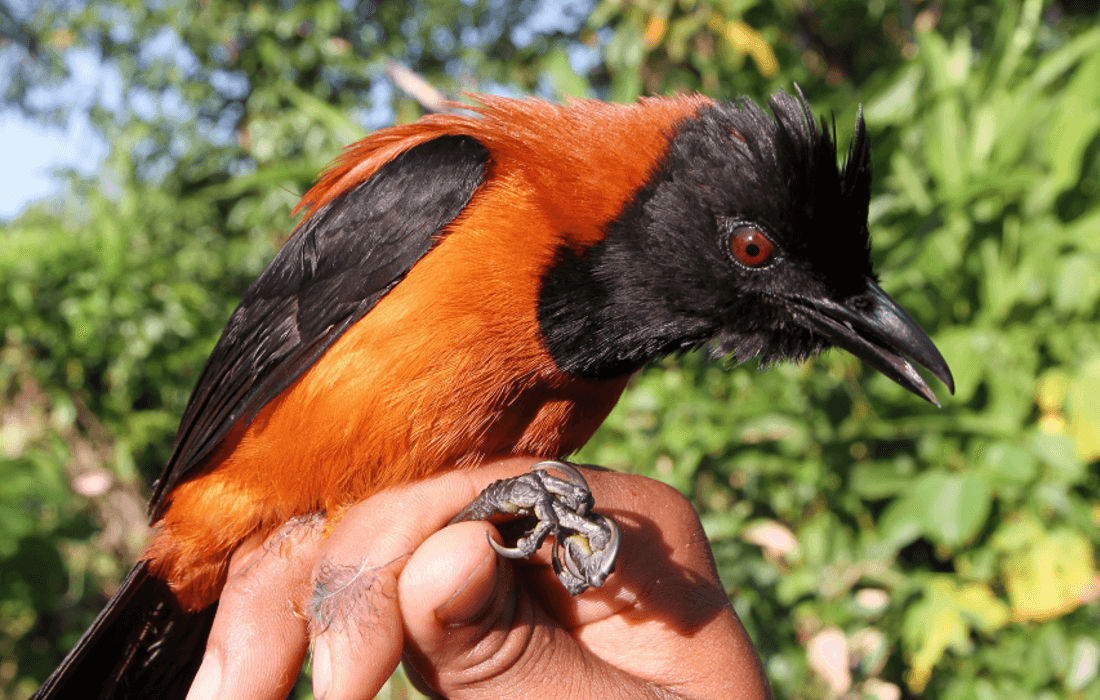
Most people are familiar with South and Central America’s iconic poison dart frogs—especially the golden poison frog. These small, brightly colored amphibians can kill a human at the slightest touch. The discovery of the same type of toxin in birds’ skin and feathers demonstrates that the frog toxin is more widespread than once believed.
“It’s a bit like cutting onions—but with a nerve agent, I guess.”
The poison is called Batrachotoxin. It’s an incredibly potent neurotoxin that, in higher concentrations leads to muscle cramps and cardiac arrest nearly immediately after contact.
“The bird’s toxin is the same type as that found in frogs, which is a neurotoxin that, by forcing sodium channels in skeletal muscle tissue to remain open, can cause violent convulsions and ultimately death,” explains Bodawatta.
South America’s poison dart frogs use their toxin to protect them from predators. Though the level of toxicity of the New Guinean birds is less lethal, it may still serve a defensive purpose, but the adaptive significance for the birds is yet uncertain.
“Knud thought I was sad and having a rough time on the trip when they found me with a runny nose and tears in my eyes. In fact, I was just sitting there taking feather samples from a Pitohui, one of the most poisonous birds on the planet. Removing birds from the net isn’t bad, but when samples need to be taken in a confined environment, you can feel something in your eyes and nose. It’s a bit like cutting onions—but with a nerve agent, I guess,” laughs Bodawatta.
“The locals aren’t fond of spicy food and steer clear of these birds, because, according to them, their meat burns in the mouth like chili. In fact, that’s how researchers first became aware of them. And the toxin can be felt when holding onto one of them. It feels kind of unpleasant and hanging on to one for long isn’t an appealing option. This could indicate that the poison serves them as a deterrence of those who would want to eat them to some degree,” explains Jønsson.
There is a distinction in biology between the two ways that animals deploy poisons. There are poisonous animals that produce toxins in their bodies and others that absorb toxins from their surroundings. Like the frogs, the birds belong to the latter category. Both are believed to acquire toxins from what they eat. Beetles containing the toxin have been found in the stomachs of some of the birds. But the source of the toxin itself has yet to be determined.
What makes it possible for these birds to have a toxin in their bodies without themselves being harmed? The researchers studied this with inspiration from poison dart frogs, whose genetic mutations prevent the toxin from keeping their sodium channels open, and thereby preventing cramps.
“So, it was natural to investigate whether the birds had mutations in the same genes. Interestingly enough, the answer is yes and no. The birds have mutations in the area that regulates sodium channels, which we expect gives them this ability to tolerate the toxin, but not in the exact same places as the frogs,” says Bodawatta.
He adds: “Finding these mutations that can reduce the binding affinity of Batrathotoxin in poisonous birds in similar places as in poison dart frogs, is quite cool. And it showed that in order to adapt to this Batrachotoxin lifestyle, you need some sort of adaptation in these sodium channels”.
Therefore, these studies of the birds Multiple mutations in the Nav1.4 sodium channel of New Guinean toxic birds provide autoresistance to deadly batrachotoxin establish that while their neurotoxin is similar to that of the South American poison dart frogs, the birds developed their resistance and ability to carry it in the bodies independently of the frogs. This is an example of what biologists refer to as convergent evolution.
This basic research will primarily contribute to a better understanding of New Guinea’s birds and how different animal species not only acquire a resistance to toxins but use them as a defense mechanism.
Other aspects of the research have the potential to help ordinary people. The toxin conquered by the birds over time is closely related to other toxins, such as the one responsible for shellfish poisoning.
“Obviously, we are in no position to claim that this research has uncovered the holy grail of shellfish poisoning or similar poisonings, but as far as basic research, it is a small piece of a puzzle that can help explain how these toxins work in cells and in the body. And, how the bodies of certain animals have evolved to tolerate them,” says Jønsson
Source: University of Copenhagen
The post These birds carry poison in their feathers appeared first on Futurity.
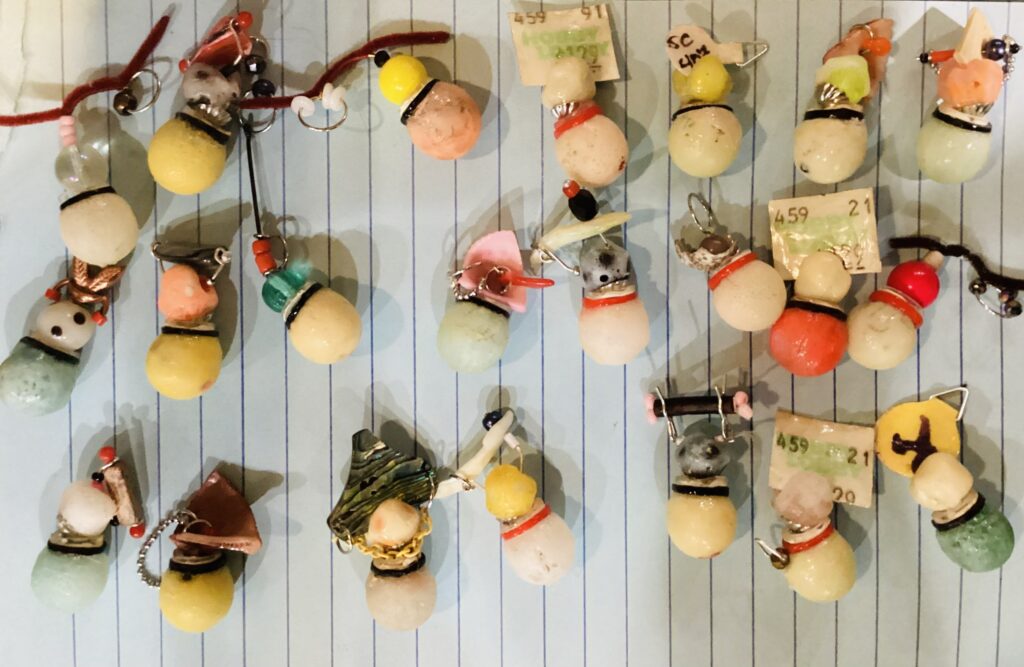
Photograph by Kate Riley.
Given a space to inhabit unobserved, I will immediately convert it into a physical representation of the inside of my brain. My annual trip to the old Zillow listing for the farm I bought eight years ago leaves me stunned every time: it was once the kind of house one could list on Zillow! Now it is mine; I have filled the walls with pictures,hung the surplus ones on the ceiling, crowded every surface with dioramas and precarious unidentifiable objects that look like chess pieces from outer space. There is nowhere to sit in the house except on the floor with the dogs (and, every hatching season, with the emu chicks who run figure eights around the obstacle art). Like my brain, it’s a fun place to visit, but you wouldn’t want to live there.
My house, the physical building, is an arranged marriage of two old farmhouses that were dragged from different parts of the country and clumsily conjoined. I decline to speculate on which side is holding up the other. There is a secret spiral staircase, accessed through a cupboard door, with ludicrously uneven treads; the wavy glass windowpanes cast distorted shadows. The two halves of my house must have each accommodated entire families, but the current inhabitants between them, in descending order of population, are: eggs, birds, dogs, me.
Every morning around eleven, having done the farm rounds and broadcast feed to the loyal birds, I commence with the small-scale batch production of objects that promise but do not fulfill utility. I tend to work compulsively and repetitively, making hundreds of variations of the same thing until I exhaust my supply of the necessary materials or my own fascination with it. There are blown-out, intact eggshells equipped with antennae or working motion sensors; eggshells hinged to open like boxes, or with latched hatches, lined with poppy red flocking; emu egg dirigibles rigged with ball chains, hanging from the kitchen rafters. Over the past six months, I’ve manufactured thousands of one-inch hollow resin spheres, each kitted out with some combination of magnets, O-rings, and fishing tackle and beads. Each one of them is perfect, and the only people who see them are the bewildered tradesmen who need access to the circuit breaker in my kitchen.
I love birds most for the combination of complexity and stupidity they exhibit: their deep-seated, unplumbable impulse to perform elaborate, apparently pointless procedures. The contents of my house demonstrate that it is an impulse I share.
Kate Riley’s story “L. R.” appears in the Winter 2022 issue of the Review.


A rewatch of the absolutely brilliant pilot of The Sopranos last night might’ve hit a little close to home. (A few years ago writer Willy Staley wrote a great piece about why everyone seemed to be watching the show.)
I was offered money by an editor to write about owls today and I was too bereft by them being gone to say yes pic.twitter.com/yCDuukfNqo
— Austin Kleon (@austinkleon) January 14, 2022
“Those goddamned ducks,” Tony cries in his therapy session. When Mike Wilson visited last Sunday, he talked about how attached people get to their owls. I told him that even though ours have stuck around longer than they ever have before, I was actively trying not to get too attached to them this season because it was so painful last spring when they didn’t stick around to have babies.

(By the way, the book Tony is reading — a subtle, terrific visual gag — is The Audubon Society Encyclopedia of North American Birds.)
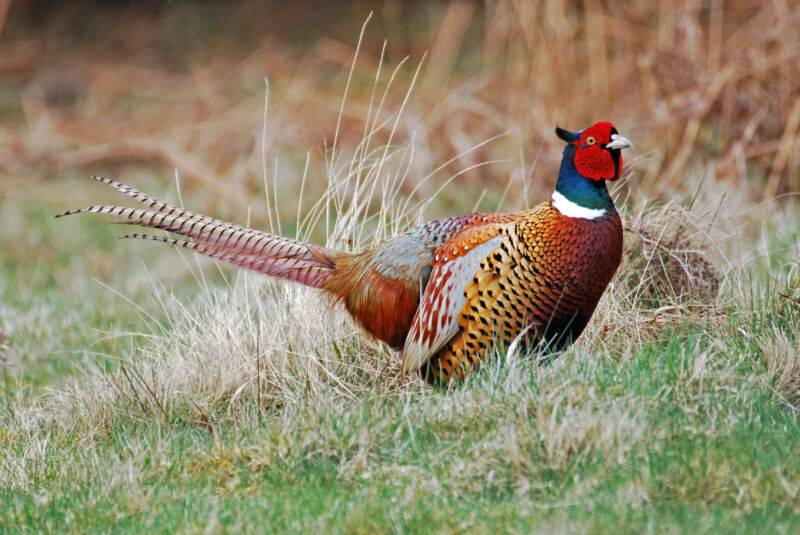
Enlarge (credit: Robert Trevis-Smith)
It's pretty easy to link humans' intelligence to our success as a species. Things like agriculture, building cities, and surviving in harsh environments require a large collection of mental skills, from good memory to the ability to communicate and work together. But it's often less clear what role intelligence plays in species with less obvious mental capabilities. In many cases, it's hard to even measure mental capacities; in other cases, it's hard to guess which capacities might improve survival.
A new study looks at a bird species that doesn't have much of a reputation for braininess: the pheasant. But the researchers behind the study find that pheasants have substantial differences in spatial thinking, and some aspects of that spatial capacity make a difference when the birds are released into the wild. Those birds that do well with navigating a complex maze adopted a larger home territory and did better at avoiding being eaten. And, almost as an accident, the study finds that the birds tend to get eaten more often when they wander out of familiar territory.
Parrots and corvids have reputations as the brainiacs of the bird world. Pheasants, not so much. But they do have advantages for the study of mental abilities. They're easy to raise in captivity, where they can be given various tests, and will adjust easily if released into the wild. They're also big enough that it's easy to attach tracking devices to see what they're doing after they've been released.
Conversations with Birds charts my transformative encounters with birds over the course of two decades. Whether I am observing the mango-colored western tanager or the prehistoric-looking long-billed curlew, I want the reader to be able to enter this book and sense a real possibility of developing an intimacy with the natural world. In these essays, I animate myself only to the extent that I can serve as a hiking companion and crack a door open for you.
It has been a pleasure over the last couple of months to get responses from readers who are identifying with the work at a philosophical level. Some send me sentences from the book “that jump out” at them. One reader, for instance, sent me her gratitude for this sentence:
“In birding, there is a forgetting, a coming out of oneself, while paradoxically also a going deeper into oneself.”
Conversations with Birds is an experiential book, and I couldn’t have written it without spending many years in California and New Mexico, obsessively listening to the “drumbeats of the Earth.” I am an author who is also a naturalist, and it is perhaps not surprising that my work is rooted deeply in place. As I was putting together this reading list, it became clear to me—and this took my breath away—that I have long gravitated toward books that know where they are situated. Here are some fine examples:
***
The Bookshop by Penelope Fitzgerald
I recently reread The Bookshop which ought to be a classic if it isn’t one already. Fitzgerald was a practitioner of concise prose that resonates over vast distances. At the end of the first chapter, Florence Green has been trusted in one instance—”and that was not an everyday experience in Hardborough.” Trust is something we all crave, and it says a lot that in the village of Hardborough, people do not trust easily. Florence wants to open a bookshop, but she’ll have to earn the trust of her neighbors. Will she? Fitzgerald’s novels function not only on the level of plot, but also on a metaphysical level, which is why I can reread them and distill new insights.

The Man Who Planted Trees by Jean Giono
Ralph Waldo Emerson once wrote, “The creation of a thousand forests is in one acorn.” The French author Jean Giono brings this aphorism to life and illustrates how one man’s generosity can rejuvenate an entire ecosystem; reading this fable feels like re-setting one’s heart and mind, and understanding why an accountability toward the Earth is not only an obligation, but a gift.

The Blue Sky by Galsan Tschinag (translated from the German by Katharina Rout)
It feels like I read this book in one sitting, though I surely must have gotten up at some point to get tea. The mountainous setting of this northern Mongolian village is so palpable that I easily slipped into the connection a young shepherd boy feels for his animals, his grandmother, and their nomadic way of life; sensing modernity tearing away at the fragile beauty of traditional ways broke my heart.

The Snow Leopard by Peter Matthiessen
One of my favorite travelogues, this book maps not only the landscape of the elusive snow leopard and the Himalayan blue sheep, but also charts the landscape of Matthiessen’s mind— and the ways in which Buddhist thought helps him navigate turbulence. The difference in the personalities of Matthiessen and his traveling companion, biologist George Schaller, can be hilarious and revelatory.

Letters on Cézanne by Rainer Maria Rilke
Rilke’s letters brought me closer to Cézanne and his studio than ever before: How the painter saw a mountain (as well as Moses) or the color blue; his taste for work; and a kind of rage that he grappled with. Now when I encounter a Cézanne painting, I stand rapt before it with fresh eyes. If only more writing about art could decode color and line with such brilliance!
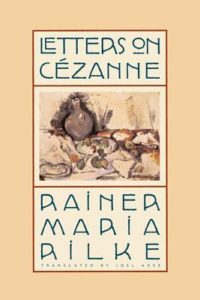
The Man-Eater of Malgudi by R.K. Narayan
I have been thinking about how we’re unable to sink into time anymore because our days are splintered by technology. If you want to enter another (very real) dimension of time, walk into the lobby of a printing shop in Malgudi, and meet some friends and extreme hangers-on; there are few better places to travel to if you like to sink into time, and R.K. Narayan is an endearing and trustworthy guide.
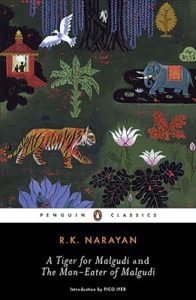
Tarka the Otter by Henry Williamson
It is a rare book in which the preface alone is worth the price of admission. “I began to write about 10 p.m. when things were quiet, and continued for three, four, sometimes five hours, while nursing the baby in the crook of my left arm,” Williamson writes. I welcome books that open with men writing while taking care of babies. Karl Ove Knausgaard covered some of this territory, but Williamson’s account in his preface is both comic and tender. The rest of the book indelibly follows the life of Tarka the otter, and Williamson has a boy’s deep love of the English country.
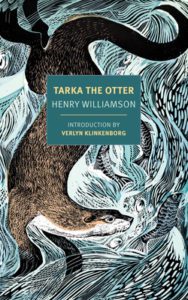
Devotion by Patti Smith
Patti Smith rocks my boat. Consistently. I scarcely know another contemporary artist whose sensibility strikes such resonant chords within me. I recently reread Devotion and marveled at how the ways in which she and I experienced Paris, decades apart, have many points of connection—how could I have not anticipated that she too would fall under the spell of Patrick Modiano? One of these days, I will treat myself to Smith’s newest, A Book of Days.

Duino Elegies by Rilke, Translated by Alfred Corn
Forgive me for invoking Rilke again but I am rapturously reading this intelligent new translation of the Duino Elegies. The introduction by Alfred Corn luminously revisits the place where Rilke began writing these elegies. Recently, at the breakfast room of a historic house, I told an aspiring poet about Corn’s translation. “My favorite is the eighth (elegy),” the poet responded. I didn’t fess up, but my favorite is the first.

Florida by Lauren Groff
One recent afternoon I was at my local bookstore, signing copies of Conversations with Birds. Later I rewarded myself with browsing. In between glancing at which Kingsolver titles the bookstore was carrying (several) and which ones by Shirley Hazard (only one), I came upon a book that I looked at closely. Florida by Lauren Groff. This was my impulsive buy, in part because of the imaginatively rendered panther on the cover, but also because Groff’s characters sometimes literally circle around place—which appeals to me.
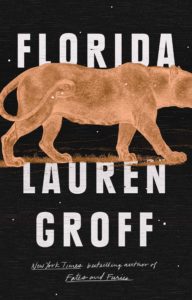
***

Enlarge / Chicken eggs are disposed of at a quarantined farm in Israel's northern Moshav (village) of Margaliot on January 3, 2022. (credit: Getty | JALAA MAREY / AFP))
The ongoing bird flu outbreak in the US is now the longest and deadliest on record. More than 57 million birds have been killed by the virus or culled since a year ago, and the deadly disruption has helped propel skyrocketing egg prices and a spike in egg smuggling.
Since highly pathogenic avian influenza (HPAI) A(H5N1) was first detected in US birds in January 2022, the price of a carton of a dozen eggs has shot up from an average of about $1.79 in December 2021 to $4.25 in December 2022, a 137 percent increase, according to data from the US Bureau of Labor Statistics. Although inflation and supply chain issues partly explain the rise, eggs saw the largest percentage increase of any specific food, according to the consumer price index.
And the steep pricing is leading some at the US-Mexico border to try to smuggle in illegal cartons, which is prohibited. A US Customs and Border Protection spokesperson told NPR this week that people in El Paso, Texas, are buying eggs in Juárez, Mexico, because they are "significantly less expensive." Meanwhile, a customs official in San Diego tweeted a reminder amid a rise in egg interceptions that failure to declare such agriculture items at a port of entry can result in penalties up to $10,000.
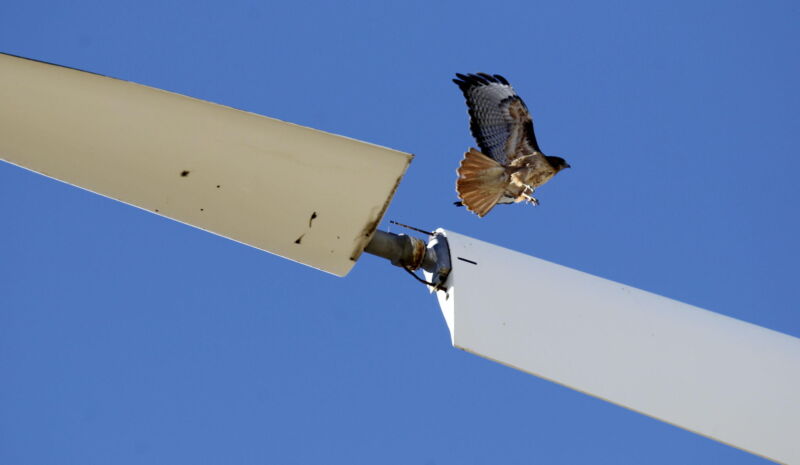
Enlarge / A Red-Tailed Hawk takes off from an idle turbine blade in 2013. (credit: San Francisco Chronicle/Hearst Newspapers via Getty Images)
"This is one of the least smelly carcasses,” said Todd Katzner, peering over his lab manager’s shoulder as she sliced a bit of flesh from a dead pigeon lying on a steel lab table. The specimens that arrive at this facility in Boise, Idaho, are often long dead, and the bodies smell, he said, like “nothing that you can easily describe, other than yuck.”
A wildlife biologist with the US Geological Survey, a government agency dedicated to environmental science, Katzner watched as his lab manager rooted around for the pigeon’s liver and then placed a glossy maroon piece of it in a small plastic bag labeled with a biohazard symbol. The pigeon is a demonstration specimen, but samples, including flesh and liver, are ordinarily frozen, catalogued, and stored in freezers. The feathers get tucked in paper envelopes and organized in filing boxes; the rest of the carcass is discarded. When needed for research, the stored samples can be processed and sent to other labs that test for toxicants or conduct genetic analysis.
Most of the bird carcasses that arrive at the Boise lab have been shipped from renewable energy facilities, where hundreds of thousands of winged creatures die each year in collisions with turbine blades and other equipment. Clean energy projects are essential for confronting climate change, said Mark Davis, a conservation biologist at the University of Illinois at Urbana-Champaign. But he also emphasized the importance of mitigating their effects on wildlife. “I’m supportive of renewable energy developments. I’m also supportive of doing our best to conserve biodiversity,” Davis said. “And I think the two things can very much coexist.”
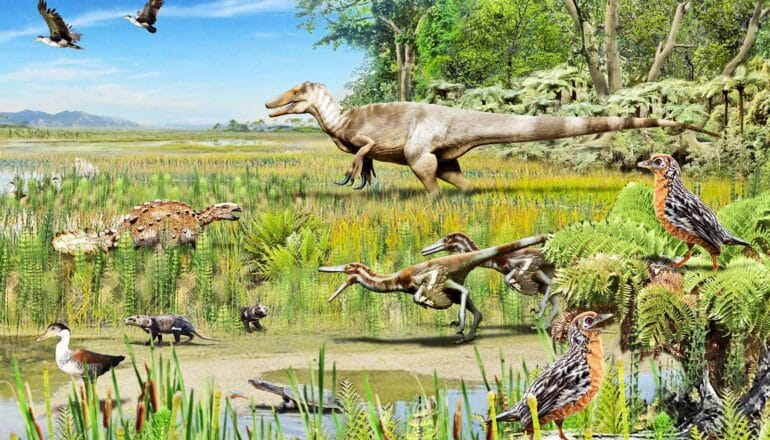
A new study provides a glimpse into dinosaur and bird diversity in Patagonia during the Late Cretaceous, just before the non-avian dinosaurs went extinct.
Fossils researchers have discovered represent the first record of theropods—a dinosaur group that includes both modern birds and their closest non-avian dinosaur relatives—from the Chilean portion of Patagonia.
The finds include giant megaraptors with large sickle-like claws and birds from the group that also includes today’s modern species.
“The fauna of Patagonia leading up to the mass extinction was really diverse,” says lead author Sarah Davis, who completed the work as part of her doctoral studies with Julia Clarke, professor at the University of Texas at Austin Jackson School of Geosciences geological sciences department. “You’ve got your large theropod carnivores and smaller carnivores as well as these bird groups coexisting alongside other reptiles and small mammals.”
The study appears in the Journal of South American Earth Sciences.
Since 2017, members of the Clarke lab, including graduate and undergraduate students, have joined scientific collaborators from Chile in Patagonia to collect fossils and build a record of ancient life from the region. Over the years, researchers have found abundant plant and animal fossils from before the asteroid strike that killed off the dinosaurs.
The new study focuses specifically on theropods, with the fossils dating from 66 to 75 million years ago.
Non-avian theropod dinosaurs were mostly carnivorous, and include the top predators in the food chain. This study shows that in prehistoric Patagonia, these predators included dinosaurs from two groups—megaraptors and unenlagiines.
Reaching over 25 feet long, megaraptors were among the larger theropod dinosaurs in South America during the Late Cretaceous. The unenlagiines—a group with members that ranged from chicken-sized to over 10 feet tall—were probably covered with feathers, just like their close relative the velociraptor. The unenlagiinae fossils described in the study are the southernmost known instance of this dinosaur group.
The bird fossils were also from two groups—enantiornithines and ornithurines. Although now extinct, enantiornithines were the most diverse and abundant birds millions of years ago. These resembled sparrows—but with beaks lined with teeth. The group ornithurae includes all modern birds living today. The ones living in ancient Patagonia may have resembled a goose or duck, though the fossils are too fragmentary to tell for sure.
The researchers identified the theropods from small fossil fragments; the dinosaurs mostly from teeth and toes, the birds from small bone pieces. The enamel glinting on the dinosaur teeth helped with spotting them among the rocky terrain, Davis says.
Some researchers have suggested that the Southern Hemisphere faced less extreme or more gradual climatic changes than the Northern Hemisphere after the asteroid strike. This may have made Patagonia, and other places in the Southern Hemisphere, a refuge for birds and mammals and other life that survived the extinction.
Davis says that this study can aid in investigating this theory by building up a record of ancient life before and after the extinction event.
These past records are key to understanding life as it exists today, says coauthor Marcelo Leppe, the director of the Antarctic Institute of Chile.
“We still need to know how life made its way in that apocalyptic scenario and gave rise to our southern environments in South America, New Zealand, and Australia,” he says. “Here theropods are still present—no longer as dinosaurs as imposing as megaraptorids—but as the diverse array of birds found in the forests, swamps and marshes of Patagonia, and in Antarctica and Australia.”
Additional coauthors are from the University of Chile, Major University, the University of Concepción, and the Chilean National Museum of Natural History.
Source: UT Austin
The post Fossils offer peek at Patagonia dino and bird diversity appeared first on Futurity.